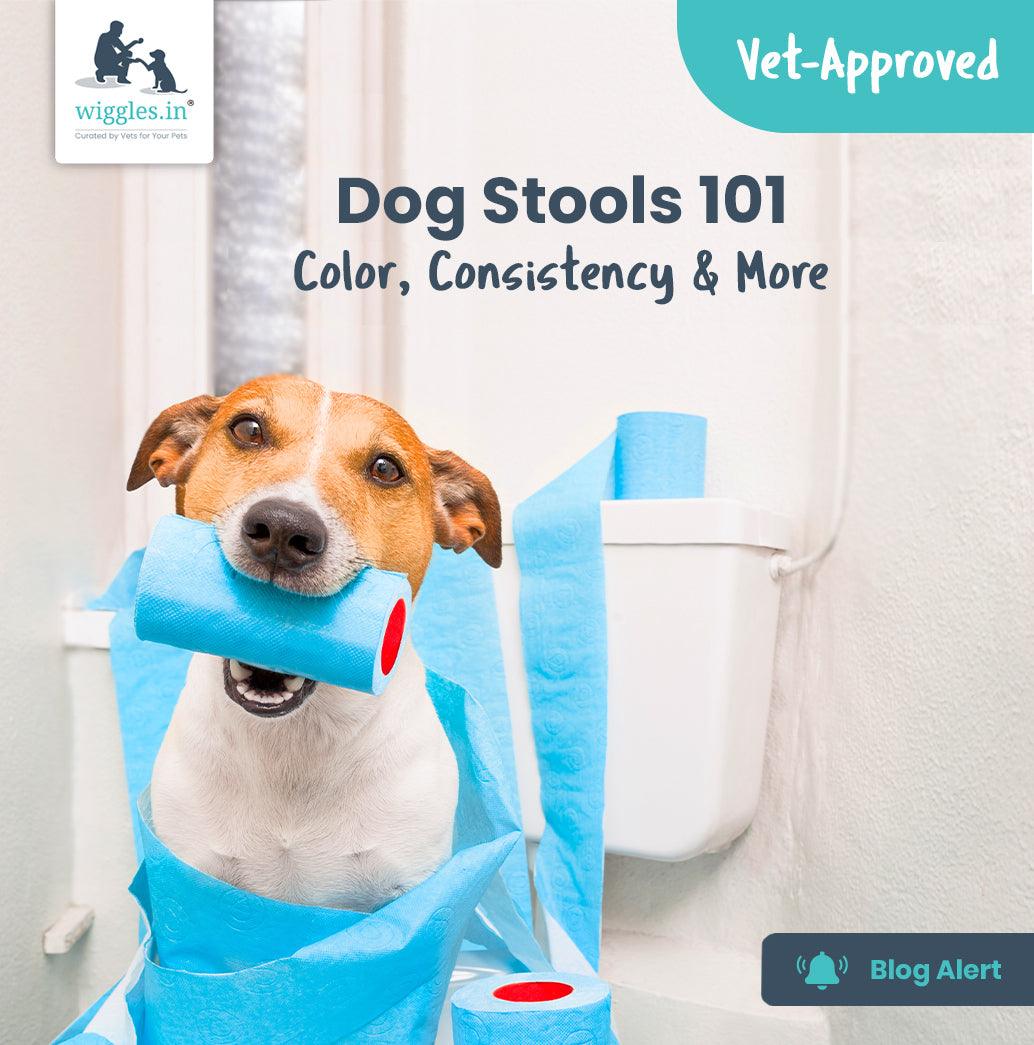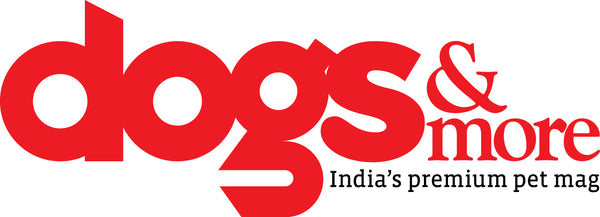Your dog’s stools can say a lot about their digestive health. As pet parents we often find ourselves wondering what is going on with our dog’s poop. What is causing that different color, that consistency or that form? And what does it mean? Keep reading to find out the answers to these questions.
Importance of knowing about your dog’s poop
Your dog’s poop can be a key indicator of their health. Monitoring their poop schedules and taking a close look at it can also help you in preventing future diseases. The four C’s you need to keep in mind are Color, Consistency, Content and Coating. These four C’s say a lot about your dog’s health and that is why your vet always asks how the condition of your dog’s poop is.
What does normal dog poop look like?
Every dog’s poop will be different and the looks of it largely depends on their diet. There are some common signs that can tell you that your dog’s poop is normal.
Color: The color of the poop should be chocolate brown. If your dog has eaten food of different colors or added colors, the color of their poop might change.
Consistency: The consistency should be not too watery and not too hard. It should be compact, moist and easy to pick up.
Contents: Dog poop that doesn’t have any foreign contents in it is an indication of a healthy dog.
Coating: The poop should leave nothing behind when you’re picking it up. Any kind of remnants on the ground can indicate that your dog is having digestive issues. A coating of mucus or froth may indicate an upset stomach.
Signs of trouble
Our curious canines want to eat everything in their sight, be it your shoes, socks or some other things that can cause digestive problems. Thankfully, the way their poop looks can tell you if something is wrong with their tummies. Each of the 4 C’s can indicate different conditions.
Color:
Depending on your dog’s diet, their poop can have different colors in it. For example- if you have given your dog beetroot (raw beetroot must be given in limited quantity) you might find a reddish streak in their poop. So a different colored poop does not always indicate sickness. However, there are some colors like green, red, black, yellow, white and gray that you need to look out for. Here’s what different colors of dog poop may indicate:
Green: This is not always an alarming sign, it can mean that your dog has eaten grass. But in other cases, green dog poop can indicate an upset stomach that can cause vomiting or other issues.
Red: Red streaks in your dog’s poop can indicate internal bleeding. This bleeding is likely to be occurring in the lower intestine. Bloody stools in dogs can also occur due to any cuts, injuries around the anus.
Black: Black dog poop also indicates that your dog has internal bleeding in the upper gastrointestinal tract.
Orange/Yellow: An unhealthy liver or gallbladder can cause orange/yellow streaks in your dog’s poop.
White: White streaks or white rice-like strains can indicate that your dog has worms. White poop can mean your dog’s diet is too high in calcium and this can lead to chronic constipation.
Grey and Greasy: Indicate an issue with the pancreas or gallbladder.
What should you do:
If your dog’s poop is green, monitor your dog closely and look out for other symptoms like vomiting. If your dog’s poop has any other color from above, call your vet immediately.
Consistency:
Notice the consistency of your dog’s poop when you pick it up the next time. The consistency of your dog’s stool can say a lot about their intestinal health.
If you notice that the consistency of your dog’s poop is ‘off’ or unusual, speak to your vet.
If your dog has black, tarry, pebble-like, hard-to-pass poop, your dog might have constipation and you should speak to your vet. A good tip is to offer a lot of water and carry a bottle of water and a bowl along with you on your walks.
The ideal consistency of dog poop is firm but not hard, segmented, long shaped, easy to pick up and moist.
If you notice soggy, loose piles or puddles, bloody diarrhea or bloody stools you must speak to your vet at once.
Content:
Finding foreign objects in your dog’s stool can mean they ate something they weren't supposed to and this something was not accepted by their body. If you find something harmful in their poop, call a vet. The two other common things found in a dog’s poop are:
Fur: Finding excessive fur in your dog’s poop means that your dog is overgrooming. This overgrooming could be triggered by anxiety, allergies or a skin disease.
Worms: If you find small rice-looking strains in your dog’s poop, these could be worms. Roundworms can also be found in dog stools and have a long, thin and cylindrical shape.
Coating:
Dog stools that have a film or sticky coating on them are telltale signs of an unhealthy dog. If you pick up your dog’s poop and find a wet sticky trail there is something amiss with your dog’s stomach. An off stench can also indicate that something is not right.
When should you see a vet?
Plan a vet visit when you notice anything off in the 4 C’s i.e. Color, Consistency, Content and Coating. Call your vet and describe the situation, your vet will most likely ask for pictures of your dog’s poop and to bring a sample of the stool along with you.
If you’re unable to visit a vet, you can choose an online video consultation with your vet. You can even schedule an appointment in advance as per your dog’s poop timings.
Your vet may ask you to collect some of your dog’s stool samples for examination. Here’s how you can bring your dog’s poop sample to the vet:
- Wear protective gloves.
- Take pictures of the poop when it is on the ground.
- Put the poop in a plastic bag that is meant to carry dog poop.
- If the stool is watery, collect as much as you can with a small shovel and put it in the bag.
- Tie the bag and put it in an airtight container.
- Refrigerate if you’re not going to the vet immediately.
Some home remedies to try:
Apart from visiting the vet, there are some additional measures you can take at home to help your dog with their digestive issues.
If your dog’s poop is extremely watery:
Feed plain steamed food that is easy on your dog’s stomach. Steamed vegetables like broccoli and pumpkin are great, mix them with your dog’s preferred meat. Bones, dehydrated chicken or duck feet or wings can also help. Giving more starch and vegetable rich diet is recommended as the goal right now is to solidify the stools.
If your dog’s poop is extremely dry and hard:
More water and more hydrating drinks are the best ways to cure constipation. If your dog is refusing to drink water, add some lukewarm water, vegetable or chicken broth to their favorite food.
To ensure your dog gets a balanced diet you can even opt for custom diet plans that are made to suit your dog’s nutritional requirements.
Probiotics are the heroes when it comes to saving your pet’s gut and digestive system. A rich amount of probiotics can be found in homemade curd. Offering your pet unsalted and room temperature curd or buttermilk can help their gut and avoid digestive problems.
Your vet may prescribe probiotics to help your dog’s gut health. Choose probiotics that have at least 5 billion CFUs (colony-forming units.) The more the CFUs in a probiotic the better it is for your pet. Most probiotics are available in powder and pill forms. If your pet is picky about eating these with their food, you can go for quick dissolving palatable probiotic strips. Your pets will make no fuss and take their medicine in a second with these strips!
Team Wiggles and our vet experts are always here for you and your pets. Reach out to us on +91 8431620000 and we will be happy to help!
*Disclaimer: This blog is vet-approved and includes original content which is compiled after thorough research and authenticity by our in-house team of vets and content experts. It is always advisable to consult a veterinarian before you try any products, pet food or any kind of treatment/medicines on your pets, as each pet is unique and will respond differently.


















